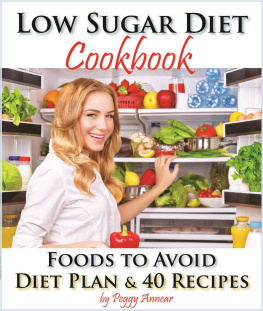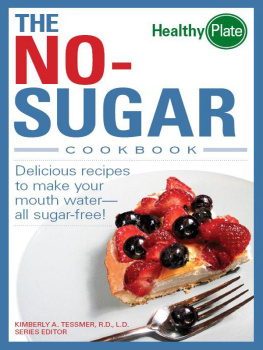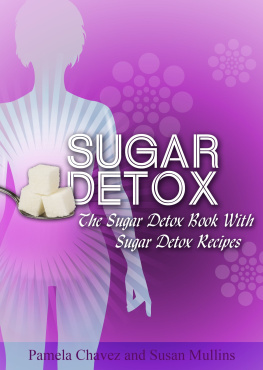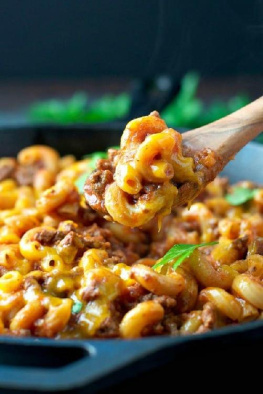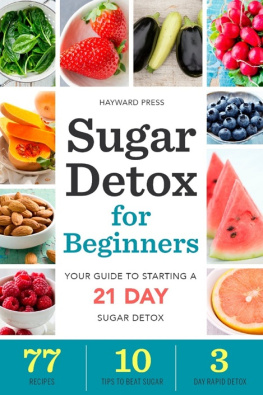Low Sugar Diet: A Low Carb Sugar Free Cookbook and Diet Plan. Discover How to Quit Sugar and Which Foods to Avoid
Peggy Annear
Table of Contents
Our Sugar Addiction
Research shows that people in Western countries are eating on average the equivalent of about 35 teaspoons of sugar a day! This is because sugars are hidden in almost all the foods we buy from the supermarket, not straight out of the sugar bowl! We need to take a sensible approach to sugars in our diet.
Removing sugar from your diet is the quickest way to lose fat and increase your energy levels. Out of balance blood sugar levels can cause depression which encourages the body to store sugar as fat instead of using it for energy. The quit sugar plan aims to remove processed sugars and simple carbohydrates from your diet. Your skin and mental focus will benefit too!
It's not possible to see added sugars in teaspoons on packaging during manufacturing, but the Nutrition Facts Label can help us to identify added sugars. Look for common sweeteners such as sugar, corn syrup, dextrose and honey.
This book will give you the tools you need to achieve your goals. Better eating habits will give you a jump start to a better lifestyle.
D iet After Sugar Detox
Artificial sweeteners aren't really a healthy long term solution to removing sugar either because you want to re train your taste buds. Also, using large amounts of artificial sweeteners may lead to adverse health side effects. You will start finding that artificial sweeteners taste horrible and way too sweet! Stevia and Agave seem to be popular natural plant based sweeteners around right now, however Agave is very high in fructose. It is surely better to be eating small amounts of natural honey and maple syrup in moderation for example rather than eating loads of unhealthy so called "sugar free" supermarket foods that are laden with artificial sweeteners and who knows what else. Some common sense has to come into play. Moderation is key and you won't crave sugar like before. You "sweet tooth" will be much more refined. Don't forget too that many recipes can be adapted by reducing sugar and substituting sugar for prunes, honey, maple syrup or dates for example. If you have the time, it is better to cook your own foods so you know what goes into each recipe! Your homemade recipes will be free of all those added sugars, chemical additives and preservatives!
Check Nutritional Information on food labels for Total Carbohydrates as well as Sugars. Carbohydrates are the bodys main source of energy. Carbohydrates fall generally into two categories: sugars and starches. Sugar is a simple carbohydrate, and starches, which are complex carbohydrates, break down into blood sugar also known as glucose. Consuming too many carbohydrates can quickly spike blood sugar levels which may cause problems over time. Monitoring and maintaining carbohydrate intake is key to blood sugar control. Foods high in sugary carbohydrates include sugary beverages, desserts, dried fruits, sweets, candy, honey and high sugar fruits. Foods high in starchy carbohydrates can be monitored including starchy vegetables, flour based foods, cereals, peas and beans to a lesser extent, and whole grains such as white rice, barley, oats and quinoa. As some of these foods have high nutritional value on the positive side, limit them and eat in moderation. Cut out or strictly limit amounts of brown rice and quinoa during the stricter 7 day sugar detox phase. Eat lots of low sugar veggies such as broccoli, cauliflower, spinach and garden salads.
How Much Sugar?
A favorite Chinese Proverb: "Give a man a fish and you feed him for a day; teach a man to fish and you feed him for a lifetime" By observing food labels and learning how to read them, you will be equipped with knowledge how to choose foods wisely from this day forward.
Locate the "Nutritional Information" on the food packaging. Look for "Total Carbohydrates" and "Sugars" as both these will be indicated there. (Incidentally, Trans fats are the unhealthy fats) Remember Fructose and Corn Syrup are some of the worst offenders! Your goal is to aim for foods lower that 5g if possible. Analyze the sugar per 100g because per serving varies from product to product.

The goal for diabetics especially, whether or not they use insulin, is to keep their blood sugar as steady as possible and to maximize their intake of nutritious carbs and minimize consumption of less nutritious foods. A starting place for diabetics is to have roughly 45 to 60g of carbs per meal and 15 to 30g for snacks. Consult your doctor. Read more here about counting carbs.
What is an Acceptable Amount of Sugar?
- High over 22g of total sugars per 100g
- Low 5g of total sugars or less per 100g
*If the amount of sugars per 100g is between these figures, then levels of sugar match accordingly.
*The sugar amount in the nutrition label is the total amount of sugars in the food. It includes added sugars and sugars from ingredients such as fruits and milk. Eggs incidentally have around 1g of sugar per 100g (depending if they are cooked) so these are wonderful nutritional packs straight from nature!
Check the Total Carbohydrates
Carbs are the complex part of sugar so they need to be watched as well. For example quinoa may have only 0.9g of sugar per 100g, but has 64g of total carbs! It is also however high in fibre, so this is where a balanced diet full of a variety of natural foods in your best option for health and weight loss. Moderation is the key when eating high carb or high sugar foods. In saying that, all "junk" foods need to be removed altogether as they have virtually no nutritional value whatsoever!
What is an Acceptable Amount of Carbohydrates?
- As a guide, if you eat about 2,000 calories a day, you should consume about 250g of complex carbohydrates per day. That's about 1/8th.
Another example is an average slice of bread. It = approx. 15 grams or 1 serving of carbohydrate.
Although white and wheat bread have a very similar carbohydrate content depending on the brands and labels of course, whole-wheat bread is often best. It usually has more than twice the amount of fiber as white bread, meaning you digest it more slowly, hence your blood sugar will rise more gradually after eating it. Go here to get sugar and carb count for breads.
Here is an example of a food label that doesn't display sugar per 100g. Always analyze the sugars and total carbs PLUS observe if it's only per Serving Size.
Let's look at the following "health bar" packet. It is high in sugars at 25g and that's not even per 100g but per serving size which is 1 bar! Not healthy, but a way to make it appear that there is less sugar. Also note 33g of total carbohydrates. Learn more here about food nutrition.

Foods to Eat
Low Sugar Foods to Eat:
- Beef, Lamb, Pork, Chicken, Turkey and Seafood
- Low Sugar Vegetables
- Salad Greens
- Avocado
- Tomato
- Lemons & Limes
- Brown Rice
- Quinoa
- Beverages - Water, Black Herbal Tea or Black Coffee (unsweetened)
Next page
